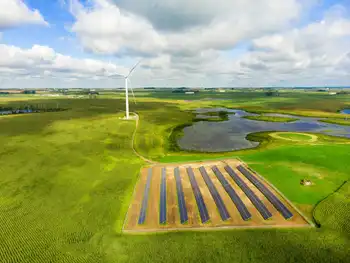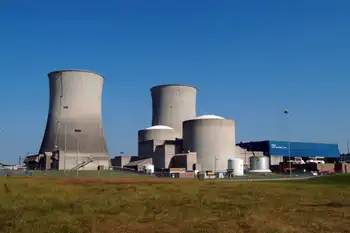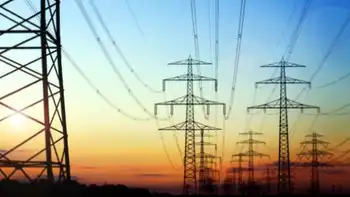Closing coal plant cuts child development problems
By International Herald Tribune
Arc Flash Training CSA Z462 - Electrical Safety Essentials
Our customized live online or in‑person group training can be delivered to your staff at your location.

- Live Online
- 6 hours Instructor-led
- Group Training Available
The study in the peer-reviewed Environmental Health Perspectives journal found that after the coal plant was shut in the midwestern city of Tongliang, pregnant mothers living in the area had far less exposure to pollutants and their children showed significantly fewer delays in developing motor skills such as muscle coordination by the age of 2.
"This study provides direct evidence that the Chinese government's action to shut down a polluting power plant had measurable benefits on the development of children," said Frederica Perera, lead author of the study and the director of the Columbia Center for Children's Environmental Health in New York.
"These findings have major implications for environmental health and energy policy in China and elsewhere," she said.
The study tested the development of two groups of about 100 children, one group born before the Tongliang coal plant's closure in 2004 and the other born after it was shut.
Barbara Finamore, director of the Natural Resources Defense Council's China program whose group helped researchers identify a site, said she was hopeful the findings would persuade authorities to weigh the affordability of coal against the health costs.
"Coal is much cheaper than the alternatives. But when you factor in the cost of coal to children's health, it changes the equation," Finamore said. "With the one-child policy, children are one of China's most precious resources. They cannot afford to be raising a new generation of children with serious developmental difficulties."
China introduced rules in the late 1970s that limit many couples to only one child.
But Peter D. Sly, who heads the World Health Organization's Collaborating Center for Research on Children's Environmental Health and is based in Australia, was more cautious.
He said it was an "interesting study" that shows how reducing exposure to pollutants during gestation can improve health outcomes for children, especially brain development. But he said the results do not have implications for "modern, coal-fired power stations" in China.
The Tongliang coal plant did not have pollution control equipment to limit the emission of toxins that typically include carbon dioxide, sulfur dioxide, nitrogen oxide and particulate matter.
"My personal opinion is that modern power stations may be better, but we don't know how much better," said Sly, who was not part of the study. "These data are not strong enough to call for closing all coal-fired power stations but do suggest the need for studies to examine the potential health effects of modern, so-called, clean power stations."
China relies on coal for three-quarters of its electricity and has been slow to switch to cleaner options such as wind, solar and hydropower.
While it has fueled the country's economic boom, the burning of coal has caused widespread air pollution in China, contributed to worsening acid rain and helped make the country the world's top emitter of carbon dioxide and other heat-trapping gases blamed for global warming.
The study found that mothers living near the coal-fired plant breathed in polycyclic aromatic hydrocarbons, which are produced when coal is burned and were passed onto their babies through the mother's placenta. Researchers tested the levels of polycyclic aromatic hydrocarbons in the fetal umbilical cord blood of the children in the two groups.
Researchers found the group that was born after the power plant closed had 40 percent lower levels of the contaminant in the cord blood and a 60 percent reduction in the frequency of "delayed motor development."
Development delays typically reflect that a child is not meeting certain benchmarks for his age, for example a 2-year-old who is not yet climbing stairs well or grasping objects securely, researchers said.
All the women in the study were nonsmokers and exposure to secondhand smoke and lead was carefully measured and recorded to ensure it did not affect the findings, the researchers said.
"The government action of shutting down a polluting plant allowed us to do something we couldn't do before," said Perera, who collaborated with Columbia colleague Deliang Tang, Tin-yu Li of the Children's Hospital of Chongqing Medical University as well as other Chinese scientists.
"In the past, almost all research has evaluated the adverse effects of pollution," she said. "This in a very real sense is a good news story."
The China research builds on ongoing work conducted by Perera and her team which found reduced fetal growth in babies born to mothers from coal-burning regions of Poland who were exposed to PAH. A separate study the group did in New York City also found that mothers exposed to more of the contaminant were likely to have children who scored lower on mental development tests.











